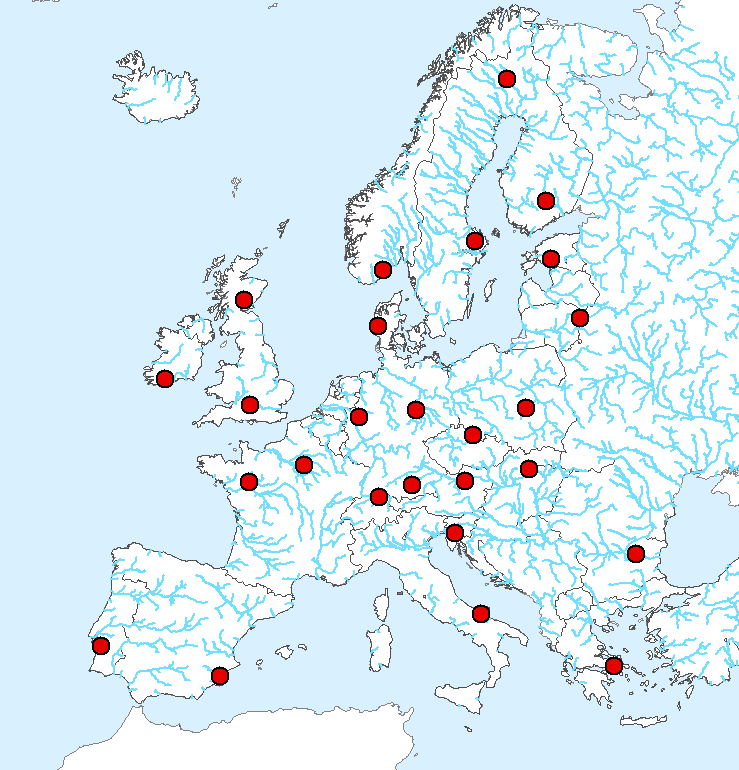PEER-EurAqua Network of Hydrological Observatories
Observatories are based on existing infrastructures, long-term monitoring schemes, and data management services, which PEER and EurAqua members provide or support. In all cases the observatories have already provided facilities, data or information to enable a wide range of research activity, and are therefore well known to the local network partner. Observatories are relevant to the scale of water resources (i.e. 100s to 1000s of km²) but may also contain small (reach or plot) scale research sites.
Because of the independent establishment and operation of the observatories, the resources and facilities provided by each observatory are not standardised or uniform. However, an objective of the network is introduce commonality where appropriate, so that methods and analyses can be readily transferred between sites, or applied to the network as a whole, or a sub-set of observatories.
The observatories have been selected by the local network partners based on the particular characteristics or facilities of the observatory, or the perceived benefits the observatory brings to the network. It is planned that the network is dynamic and can evolve in response to technological developments, novel applications, and to address gaps.
Below is a map showing the locations of the observatories, followed by a list of the observatory names and countries.
For further information about the PEER-EurAqua network of hydrological observatories contact Prof. Alan Jenkins at the Centre for Ecology and Hydrology, UK (email jinx@ceh.ac.uk).
Observatories:
Ammer (Germany)
Athens (Greece)
Candelaro (Italy)
Drzewicka (Poland)
Erlauf (Austria)
Fyris (Sweden)
Grand Morin (France)
Kennet (UK)
Lee (Ireland)
Metuje (Czech Republic)
Pallasjärvi (Finland)
Parnu (Estonia)
Reka (Slovenia)
Rimava (Slovakia)
Rur (Germany)
Saale/Bode (Germany)
Sado (Portugal)
Scorff (France)
Segura (Spain)
Skjern (Denmark)
Suur-Päijänne (Finland)
Tay (UK)
Tcherny Lom (Bulgaria)
Thur (Switzerland)
Tovdal (Norway)
Zeimena (Lithuania)
CCM2 © European Commission, JRC
NUTS0 © Eurostat



